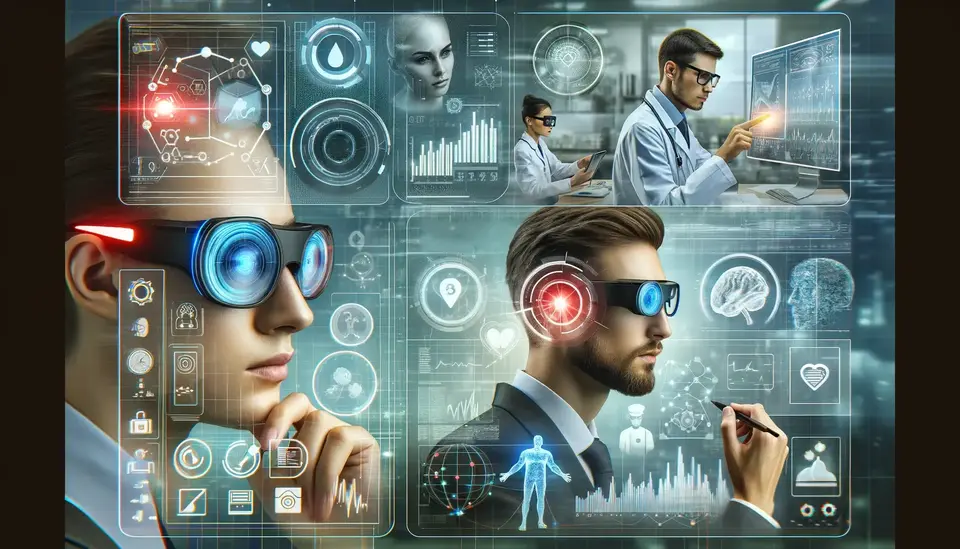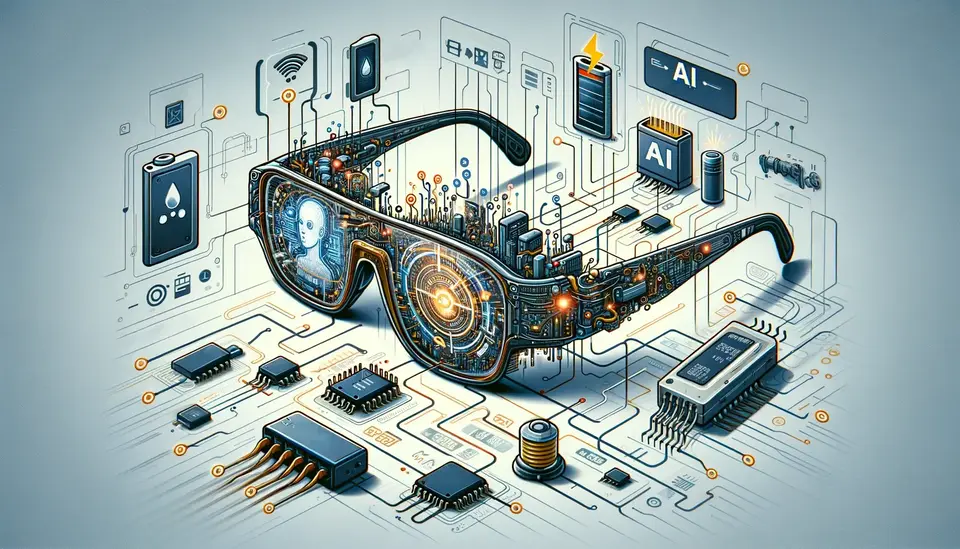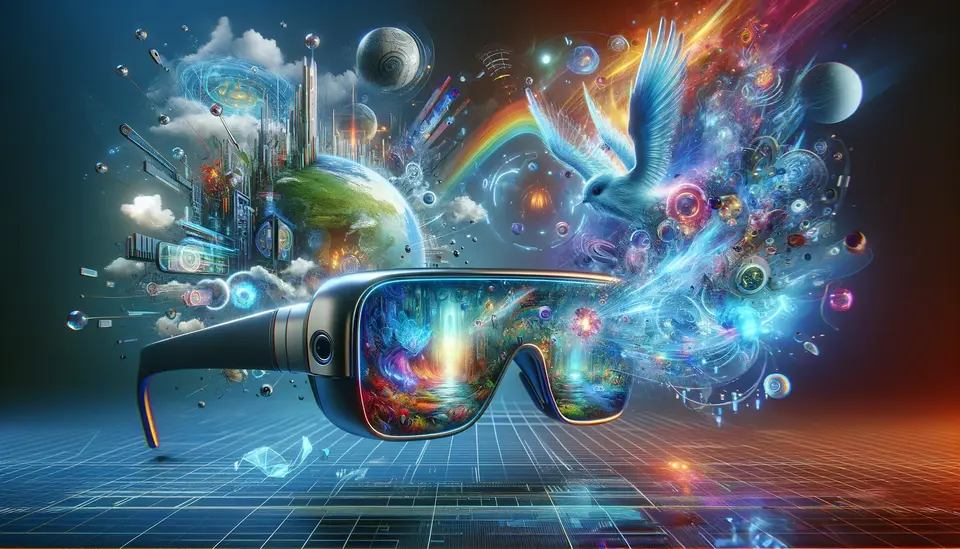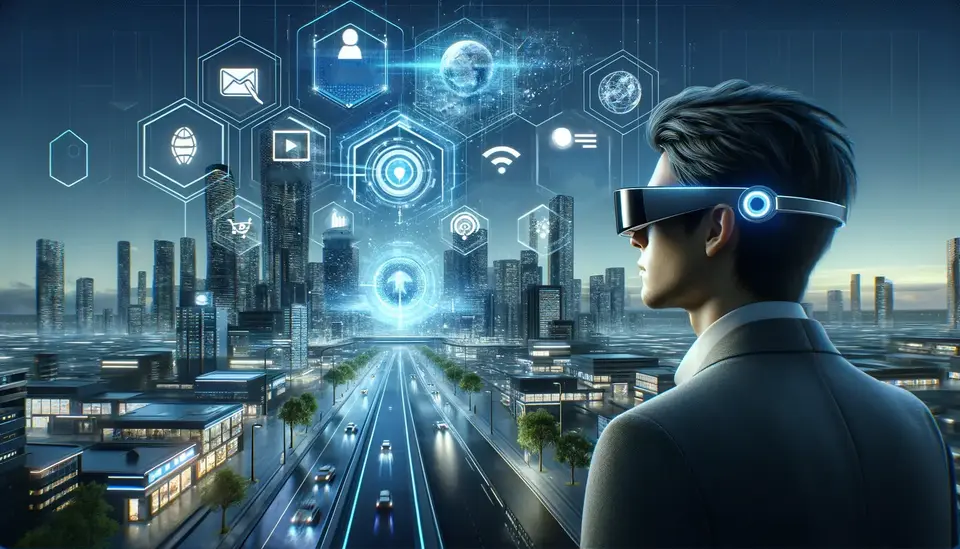Harnessing the Power of AI in the World of Smart Glasses
Posted on February 10, 2024 8 minutes 1494 words
Table of contents
Introduction
In an era where technology seamlessly blends with daily life, smart glasses emerge as a beacon of innovative wearable technology. These sophisticated devices, once a figment of sci-fi imagination, are now a reality, offering a glimpse into a future where digital information is overlaid on the physical world. Central to this transformation is Artificial Intelligence (AI), a powerful catalyst that is reshaping how we interact with and experience the world through smart eyewear.
Smart glasses, equipped with AI, are not just about projecting information onto a lens; they are about creating intuitive, personalized experiences that enhance daily life and professional tasks. From augmenting reality with virtual data to providing real-time health monitoring, AI is the driving force behind these advanced capabilities.
In this blog, we delve into the multifaceted role of AI in revolutionizing smart glasses. We’ll explore how AI elevates the user interface and experience, its practical applications in various fields, the challenges faced in integrating AI with wearable technology, and the future potential of this exciting synergy. Whether you’re a tech enthusiast, a professional in the wearable tech industry, or simply intrigued by the future of smart technology, join us in uncovering how AI is turning the concept of smart glasses from a novel gadget into an essential tool for the modern world.

AI in Enhancing User Interface and Experience
The true magic of smart glasses lies in their ability to provide an immersive, intuitive user experience, and AI is at the heart of this transformation. By integrating artificial intelligence, smart glasses are evolving from mere display devices to intelligent companions that understand and anticipate user needs.
Intuitive Interaction through AI
One of the most significant enhancements AI brings to smart glasses is the creation of an intuitive user interface. Traditional input methods like touchpads or buttons are replaced or augmented with AI-driven features such as voice recognition, eye tracking, and gesture control. This shift allows for a hands-free, natural interaction, making the use of smart glasses more seamless and accessible.
Personalization and Contextual Awareness
AI excels in personalizing user experiences. Smart glasses, powered by AI, can analyze user preferences, behaviors, and even the surrounding environment to deliver relevant information and services. This could range from providing real-time navigation adjustments based on traffic conditions to suggesting context-appropriate data overlays in professional settings.
Enhancing Accessibility
AI’s role in enhancing accessibility through smart glasses cannot be overstated. For individuals with disabilities, AI-powered features like real-time transcription for the hearing impaired or object recognition for the visually impaired open up new avenues of interaction and independence.
Responsive and Adaptive Experiences
AI enables smart glasses to be responsive and adaptive. As the system learns from user interactions, it can tailor the display of information, adjust the level of augmented reality immersion, and even control the opacity of the lenses based on external lighting conditions and user preferences.
Real-World Applications of AI in Smart Glasses
The integration of AI in smart glasses is not just a technological triumph; it’s a gateway to a myriad of practical applications that are transforming both everyday life and various professional domains.
Navigation and Travel Assistance
One of the most immediate applications of AI-powered smart glasses is in navigation. By providing real-time, hands-free directions and contextual information about surroundings, these glasses offer an enhanced travel experience. Tourists can receive instant translations and historical facts about landmarks, while commuters can get updated traffic information.
Health Monitoring and Fitness
In the health and fitness sector, smart glasses equipped with AI are game-changers. They can track vital health metrics like heart rate and calories burned, offer personalized workout guidance, and even detect signs of fatigue or stress. This not only helps users maintain a healthy lifestyle but also provides valuable data for healthcare professionals.
Professional and Industrial Applications
The impact of AI-integrated smart glasses in professional settings is profound. For instance, in manufacturing, they can provide workers with real-time data, schematics, and procedural steps, enhancing efficiency and safety. In fields like medicine, they offer surgeons hands-free access to patient data and surgical visualizations during procedures.
Augmented Reality in Education and Training
AI-driven smart glasses are revolutionizing education and training. They offer immersive learning experiences, allowing students to explore virtual labs or historical sites. For training, especially in high-risk professions, they provide safe, realistic simulations, enhancing skill acquisition and retention.
Challenges in AI Integration with Smart Glasses
While the fusion of AI with smart glasses opens up a world of possibilities, it also presents a set of challenges that need to be navigated carefully.
Technical Hurdles
One of the primary technical challenges is battery life. Powering AI algorithms requires significant energy, and finding a balance between functionality and battery efficiency is crucial. Additionally, ensuring seamless and real-time processing of data while maintaining a compact, wearable form factor poses significant engineering challenges.
Data Privacy and Security
As smart glasses collect and process vast amounts of personal data, concerns regarding privacy and data security become paramount. Ensuring that user data is securely stored and handled, and that privacy is maintained, especially in public settings, is essential. This requires robust encryption methods and clear user consent protocols.
Balancing Innovation with Ethical Considerations
As AI in smart glasses becomes more advanced, ethical considerations come into play. Questions around how much influence these devices should have on user decision-making, and how to prevent potential misuse, need to be addressed. Creating guidelines and standards for ethical AI development in wearable tech is crucial.
User Acceptance and Comfort
For smart glasses to be widely adopted, they need to be comfortable and appealing to wear. This includes not just physical comfort but also the ease of use and the learning curve associated with new technology. Overcoming the social stigma sometimes associated with wearable tech is also a part of this challenge.
Future Potential and Innovations in AI-Powered Eyewear
The horizon of AI-integrated smart glasses is brimming with potential, promising not just incremental improvements but groundbreaking innovations that could redefine our interaction with technology.
Advanced Augmented Reality Experiences
Future smart glasses are expected to offer even more advanced augmented reality (AR) experiences. This could mean more immersive, 3D overlays that interact seamlessly with the real world, offering educational, entertainment, and professional applications that are more engaging and interactive than ever before.
Enhanced AI Capabilities
As AI technology evolves, we can anticipate smart glasses with enhanced capabilities like more sophisticated natural language processing, better context understanding, and predictive analytics. This will lead to more personalized, anticipatory interactions, where your glasses not only respond to your commands but also anticipate your needs.
Integration with Other Technologies
The integration of smart glasses with other emerging technologies, such as 5G, IoT (Internet of Things), and blockchain, is expected to amplify their capabilities. For example, faster data transmission speeds with 5G could enable more real-time, high-bandwidth AR experiences, while IoT connectivity could allow for seamless interaction with other smart devices.
Ethical AI and User-Centric Design
As we advance, a significant focus will be on developing ethical AI and user-centric designs. This includes creating smart glasses that respect user privacy, offer inclusivity and accessibility, and prioritize user well-being. Innovations in this area could set new standards for how technology is developed and integrated into daily life.

Conclusion
As we unravel the intricate blend of Artificial Intelligence and smart glasses, it’s clear that we stand on the cusp of a technological renaissance. AI is not just enhancing the functionality of smart eyewear; it’s redefining the way we interact with information, our environment, and even each other.
Recap of AI’s Pivotal Role
Throughout this exploration, we’ve seen how AI is pivotal in enhancing user interfaces and experiences, driving practical applications in various fields, and how it’s navigating through the challenges of integration. The potential of AI-powered smart glasses extends far beyond current capabilities, promising a future where digital augmentation becomes a seamless part of our daily lives.
The Balance of Innovation and Responsibility
As we forge ahead, the balance between innovation and ethical responsibility remains paramount. The future of smart glasses hinges not only on technological advancements but also on how we address concerns of privacy, user comfort, and ethical AI usage. It’s a journey that requires continuous dialogue, research, and collaboration across various sectors.
A Call to Embrace the Future
For tech enthusiasts, professionals in the wearable technology industry, and the general public, the evolution of smart glasses represents an exciting frontier. It invites us to imagine a future where our digital and physical realities intertwine in ways that enhance our understanding, experiences, and interactions. As we embrace this future, let’s remain mindful of the power and responsibility that come with such profound technological integration.
The journey of AI in smart glasses is just beginning, and its path will be shaped by innovation, ethical considerations, and the ever-changing landscape of human needs. Let’s watch this space with anticipation and a readiness to adapt to the wonders it has in store.








